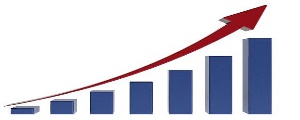 GN, Bank of Africa and Sahel Sahara banks offered loans below 30%
GN, Bank of Africa and Sahel Sahara banks offered loans below 30%
Sixteen banks charge lending rates above 30 percent and higher than the average lending rate, the Bank of Ghana’s latest Annual Percentage Rate (APR) and Average Interest (AI) for the month of January 2018 has revealed.
The banks are ADB, CAL, Energy Commercial Bank, First Atlantic Bank, FBN, Fidelity, NIB, HFC and Omni Bank. The rest are Sovereign Bank, Premium Bank, Prudential Bank, The Royal Bank, UBA, UMB and uniBank.
Banks such as GN, Bank of Africa and Sahel Sahara (BSIC) interestingly offered loans to consumers below 30 percent.
Standard Chartered Bank and Bank of Baroda began the year 2018, offering the least competitive loan rates of 22.0 percent to consumers in both household and enterprises in all categories. They also ended the year 2017 being the best bank with the cheapest loan rates of 22.0 percent for both household and enterprises in all categories.
This means customers of these two banks will pay a monthly rate of 1.83 percent on the loans borrowed from these two banks.
Stanbic Bank again followed suit, charging an interest rate of 24.7 percent for all enterprises and households. GN, GCB, and Ecobank Ghana also offered interest rates of about 26.0, 26.4 and 26.5 percent for all enterprises.
A careful study of the data indicates that interest rates on loans in January 2018 had reduced by 0.1 percent.
For household, besides Stanchart and Bank of Baroda, Stanbic Bank offered a rate of 24.7 percent on all loans.
uniBank, NIB, uniBank and The Royal Bank offered the most expensive loan rates for enterprises in commerce, construction and manufacturing respectively. They charged between 36.3 and 38.2 percent respectively in these sectors. They also offered rates of more than 34.0 percent on household consumer loans.
With regard to deposits, Bank of Africa offered the best rate of 16.1 percent (unchanged from the previous month) followed again by Omni Bank and Bank of Baroda with a rate of 14.6 and 14.5 percent respectively.
On the other hand, Stanchart and Energy Commercial Bank paid the least deposit rates of 5.4 and 5.7 percent respectively to clients.
The APR is the true interest rate banks and non-bank financial institutions charge the public on loans and advances. It reflects the true cost of borrowing and includes charges and commissions levied by banks.
In all, the list covers 31 banks.